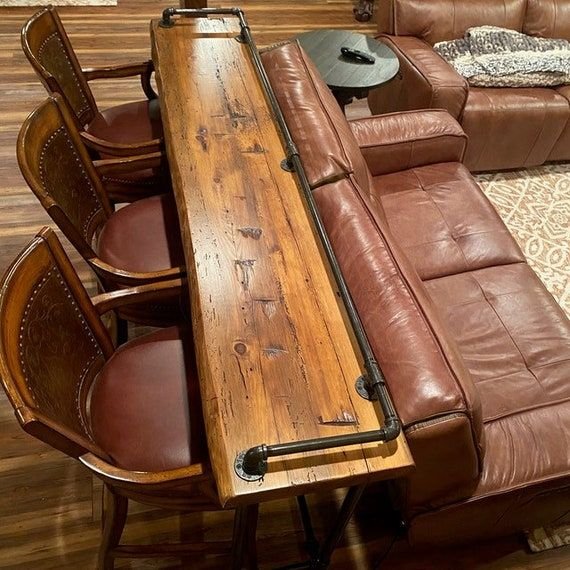Rustic, Traditional, Modern, And Contemporary Designs
If you surround yourself with the furniture you love, you can't go wrong. Whether you are interested in traditional home decor or a more modern take, there is plenty of inspiration to be found. In case you are unsure of your style, traditional and modern furniture both have unique characteristics that can help you decide which camp you fall into. With anything, you can mix traditional and modern furniture to create a timeless look. When shopping or researching items, there are certain things to keep an eye out for, making your research a little less confusing.
What Is Traditional Style?
One of the most popular styles of decorating homes has long been the traditional style. A traditional home design may incorporate features of more than one historical architectural style. Traditional-style homes are often built with elements of older home designs, such as front porches or covered entryways, dormers, columns, and at least one front-facing gable. Two-story traditional homes are the most popular designs, but traditional single-story homes are often preferred by older homeowners or young families. As with traditional architectural designs, the floor plans follow the models of older homes and feature formal living and dining rooms and fireplaces. New traditional homes combine the style of older homes with modern conveniences, such as home offices and open concept living/kitchen areas for entertaining and family time.
With all the great furniture design taking place in offices around the world today, traditional furniture still stands the test of time. To understand it better, let’s define traditional furniture. "European-inspired furniture with elements of the Victorian era, elaborate and formal looking with dark woods, fabrics, and detailed carvings. Rich mahogany, maple, and cherry woods used in traditional furniture construction give it a stately elegance. Traditional furniture descriptions aside, modern furniture design is considered the forerunner to modernism (late 19th and early 20th century).
In features that characterize traditional furniture, one could refer to opulence. Drawing inspiration from regal furniture styles, traditional furniture made the commoners feel like kings and queens, even if their living rooms were just as regal. Traditional furniture is characterized by neutral wall colors, which complement accent colors of furniture; similarly, chairs and sofas are adorned with warm jewel-toned upholstery. There are a few hallmarks commonly associated with furniture considered to be traditional: carved, dark wood, scalloped or shell designs, bun feet, or ball and claw foot legs, armrests, carved backs, ornamentation, and luxurious upholstery. Classic furniture lends a refined, elegant atmosphere to traditional style decorating. Dark, rich wood tones and bronze accents create an inviting interior for family and guests. Symmetrical arrangements of furniture and accessories and rich color schemes emphasize the orderliness and refinement of the traditional style. Typical traditional-style furnishings borrow features from a variety of historical styles, including the British Colonial revival, 18th-century English, 19th-century Neoclassical, and French country. Symmetrical arrangements and refined elegance characterize the furnishings and decor of traditional-style homes.
What is modern furniture?
It’s an easy mistake to make: Modern and contemporary furniture mean the same thing, right? Not exactly. Each style is a result of different influences and time periods, although the recent confusion between the two is all too understandable right now.
The term modern furniture refers to a specific style: the Modernist movement that began in the early 1900s with the Bauhaus school of design. These designs were a rebellion against the ornate designs that preceded them. Think of the art deco style, which is all about flourishes and ornamentation. Now think of the opposite: Modern furnishings. The modernist movement embraces a simple and clean look. Its main principles include minimalist design, smooth surfaces, clean, straight lines, warm neutral colors, accented by vibrant hues, woods, and metals. This trend would last through the mid-century modern movement of the 1950s and 1960s.
What is Contemporary Style?
Contemporary furniture, by contrast, does not refer to a certain movement. It embraces the designs of the present, so its definition is fluid. That's why it's not surprising that people confuse modern design with contemporary design. Mid-century modern furniture-such as the sets of Mad Men-is still in style in contemporary homes. These aren't ornate or cluttered looks. One of the most prominent differences between contemporary and traditional furniture is their use of lines. Modern furniture prefers straight lines while contemporary furniture adds sweeping curves. Additionally, color differs between the two. If you notice furniture with bold use of color, chances are it's contemporary. It incorporates features from a variety of styles and eras, blending them with the overall minimalist look. As of right now, mid-century modern design is on-trend, so contemporary furniture has the look of modern furniture. Having an easy-to-clean surface, being highly functional, and leaving the surface unadorned are traits of contemporary design. The following characteristics are indicative of contemporary furniture: splashes of vibrant color, hard edges, gentle curves, and natural materials, such as wood, glass, and stainless steel. Look at the combination of wood grains and metal accents in the Minimal ornamentation design, which features a minimalist design with subtle floral accents within the distressed crossbars. Alternatively, choose a fabric with modest geometric patterns or solid colors.
What is rustic furniture?
To complement the architectural style of a rustic home, the interior design must incorporate rustic elements. This style is characterized by natural textures, neutral colors, simple patterns, solid wood, and illumination from natural light. Rustic furniture celebrates the natural elements of a piece, even after it’s been turned into a fully finished piece of furniture. It isn't necessary for surfaces to be pristine; they can appear weathered or distressed. Materials are often wood, especially oak, cherry, maple, or walnut – and oftentimes, a knot in the wood is cherished more than covered. Simple shapes, sometimes blocky, are displayed here, and the colors are natural as well. We carry on the tradition that Rev. Davis began a century ago: making quality furniture, inspired by nature, and built by artisans.















